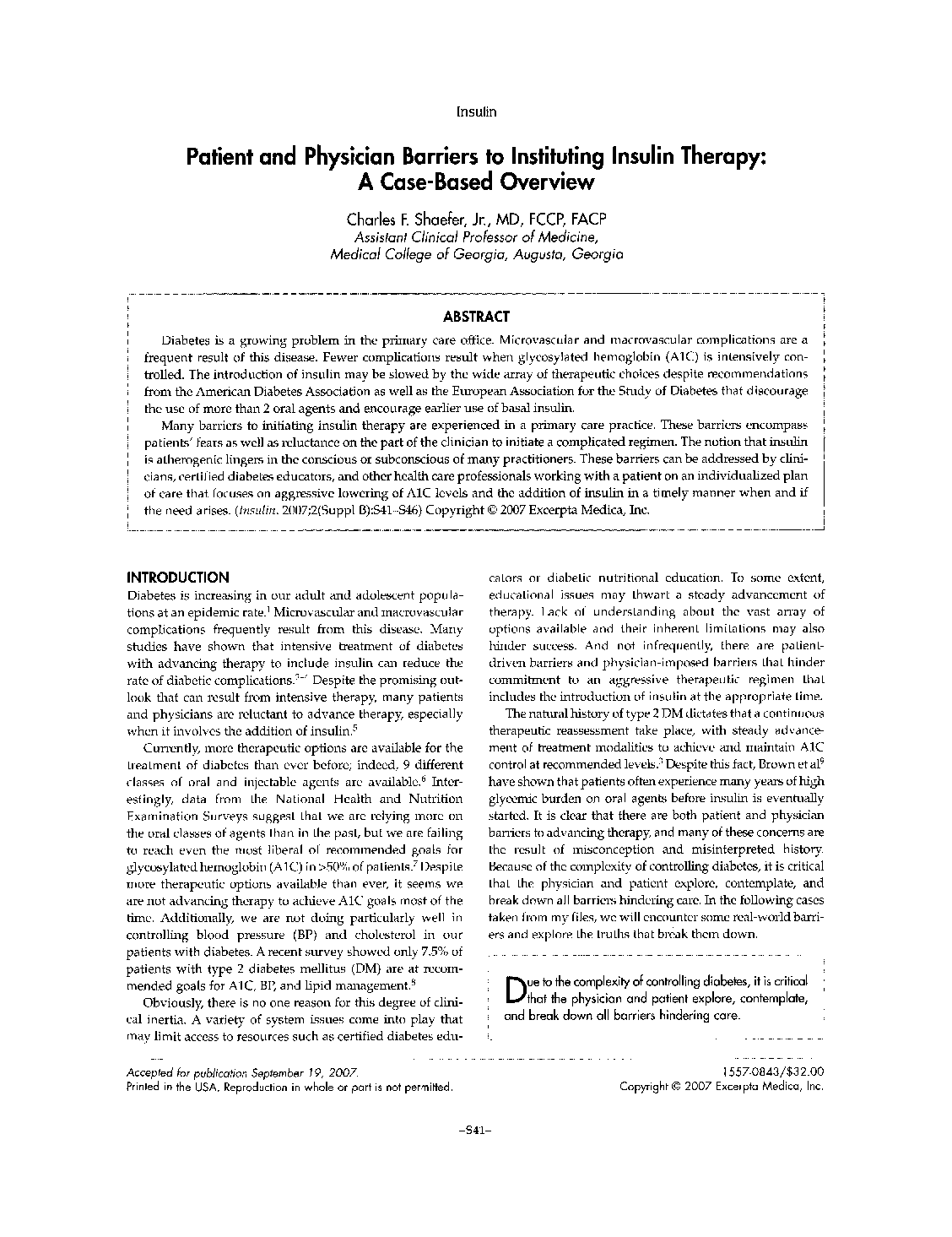| Article ID | Journal | Published Year | Pages | File Type |
|---|---|---|---|---|
| 2803845 | Insulin | 2007 | 6 Pages |
Diabetes is a growing problem in the primary care office. Microvascular and macrovascular complications are a frequent result of this disease. Fewer complications result when glycosylated hemoglobin (A1C) is intensively controlled. The introduction of insulin may be slowed by the wide array of therapeutic choices despite recommendations from the American Diabetes Association as well as the European Association for the Study of Diabetes that discourage the use of more than 2 oral agents and encourage earlier use of basal insulin.Many barriers to initiating insulin therapy are experienced in a primary care practice. These barriers encompass patients' fears as well as reluctance on the part of the clinician to initiate a complicated regimen. The notion that insulin is atherogenic lingers in the conscious or subconscious of many practitioners. These barriers can be addressed by clinicians, certified diabetes educators, and other health care professionals working with a patient on an individualized plan of care that focuses on aggressive lowering of A1C levels and the addition of insulin in a timely manner when and if the need arises.
